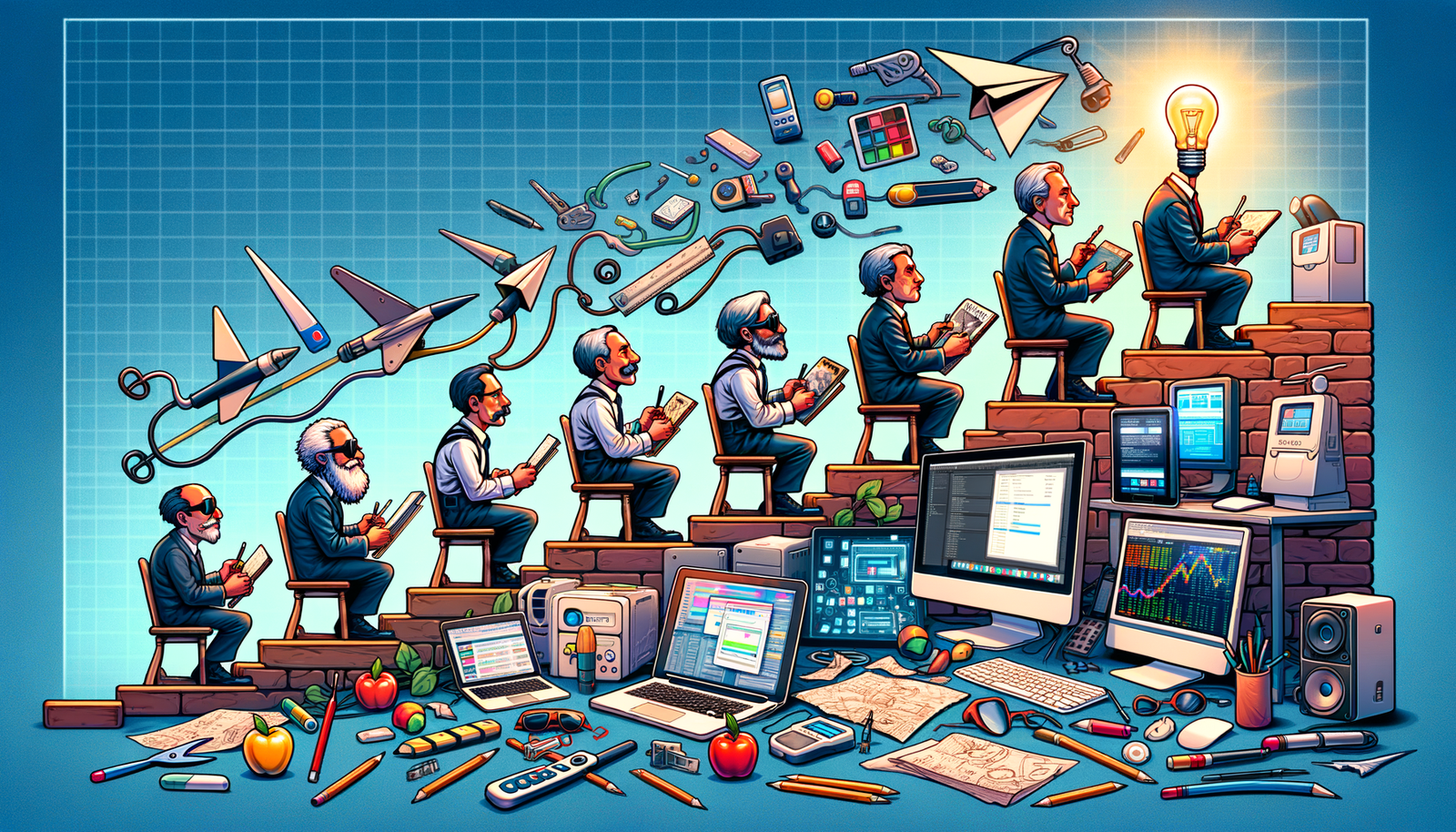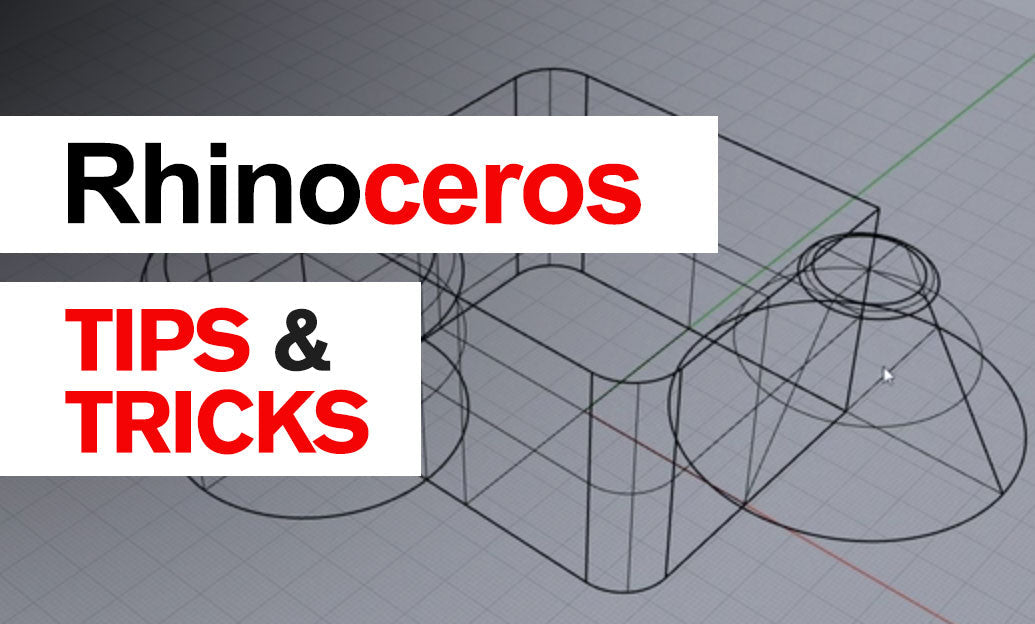Your Cart is Empty
Customer Testimonials
-
"Great customer service. The folks at Novedge were super helpful in navigating a somewhat complicated order including software upgrades and serial numbers in various stages of inactivity. They were friendly and helpful throughout the process.."
Ruben Ruckmark
"Quick & very helpful. We have been using Novedge for years and are very happy with their quick service when we need to make a purchase and excellent support resolving any issues."
Will Woodson
"Scott is the best. He reminds me about subscriptions dates, guides me in the correct direction for updates. He always responds promptly to me. He is literally the reason I continue to work with Novedge and will do so in the future."
Edward Mchugh
"Calvin Lok is “the man”. After my purchase of Sketchup 2021, he called me and provided step-by-step instructions to ease me through difficulties I was having with the setup of my new software."
Mike Borzage
Design Software History: The Evolution of Lighting Design Software: From Manual Methods to Advanced Digital Solutions and Emerging Technologies
February 02, 2025 10 min read


The evolution of lighting design software is a fascinating journey that mirrors the advancements in technology and reflects the changing needs of designers and architects worldwide. From the humble beginnings of manual calculations and physical modeling to the sophisticated, computer-generated simulations of today, lighting design software has transformed the way we conceptualize and implement lighting solutions in various environments. This exploration delves into the historical milestones, key players, and technological innovations that have shaped the landscape of lighting design software.
The Early Days of Lighting Design Software
Prior to the advent of digital technology, lighting design was an intricate discipline that relied heavily on manual calculations, scale models, and artistic intuition. Designers and architects had to meticulously plan lighting schemes using hand-drawn plans and elevations, often employing complex mathematical formulas to predict how light would interact with spaces. The pre-digital era of lighting design was characterized by a deep understanding of the principles of physics and optics, as professionals endeavored to balance both functional and aesthetic considerations. Physical models were frequently constructed to simulate lighting conditions, using small-scale representations of spaces and light sources to observe shadows and illumination patterns. This process was not only time-consuming but also limited in accuracy, as it could not fully capture the dynamic nature of light. The absence of precise simulation tools meant that designers faced significant challenges in simulating lighting conditions manually, making it difficult to predict the real-world outcomes of their designs. This often led to iterative trial-and-error approaches, where adjustments had to be made post-installation, resulting in increased costs and extended project timelines. Moreover, the manual methods lacked the ability to visualize the interplay of artificial and natural light comprehensively, hindering the exploration of innovative lighting concepts.
The transition from manual methods to computerized design marked a significant shift in the field of lighting design. The introduction of basic computer-aided design (CAD) tools applied to lighting began in the late 20th century, revolutionizing the way designers approached their craft. Early CAD software provided a platform for creating detailed 2D and 3D models, allowing for more precise planning and visualization of lighting schemes. Companies like General Electric (GE) and Philips, both pioneers in the lighting industry, recognized the potential of integrating software solutions into their offerings. GE developed sophisticated calculators and software tools that aided in the electrical and photometric calculations essential for lighting design, while Philips invested in creating programs that could simulate their lighting products within designed spaces. These efforts by companies such as GE and Philips in developing specialized lighting solutions laid the groundwork for the future of digital lighting design. The initial software developments, though rudimentary by today's standards, allowed designers to experiment with different lighting configurations virtually, reducing the reliance on physical models and enhancing the accuracy of their predictions. These tools began to incorporate basic rendering capabilities, enabling the visualization of how light interacts with surfaces and materials, thus providing a more comprehensive understanding of the potential outcomes. The collaborative efforts between software developers and lighting manufacturers during this period were instrumental in bridging the gap between theoretical design and practical application, setting the stage for more advanced technological innovations in the years to come.
Technological Advancements and Milestones
The progression from basic CAD tools to more sophisticated software was significantly propelled by the integration of graphical user interfaces (GUIs). Initially, many design programs operated through command-line interfaces, which required users to input specific codes or commands to perform functions. This mode of operation was not particularly intuitive and limited accessibility to those with specialized knowledge. The shift to GUI-based applications marked a pivotal point in software development, making lighting design software more user-friendly and accessible to a broader range of professionals. The transition from command-line interfaces to GUI-based applications allowed users to interact with software through visual elements like icons, buttons, and menus, simplifying the design process. Key milestones during this period include the development of software like AutoCAD by Autodesk, which, although not initially tailored for lighting design, provided a platform that could be adapted and expanded upon. The incorporation of GUIs led to enhanced user experiences, enabling designers to more easily manipulate models, adjust lighting parameters, and visualize outcomes in real-time. This transformation democratized lighting design software, reducing the technical barrier to entry and fostering innovation within the field. The emphasis on usability also paved the way for the incorporation of advanced features, as developers focused on creating intuitive tools that matched the evolving needs of designers. The key milestones in software development leading to enhanced user experiences reflect a broader trend in technology towards user-centric design, recognizing that software must be both powerful and approachable to be truly effective in professional settings.
The incorporation of rendering engines into lighting design software represented another significant technological advancement, fundamentally changing how designers visualize and assess their projects. Rendering engines are software components that generate photorealistic images from 3D models by simulating the behavior of light and materials. The development of advanced rendering engines allowed for more accurate and detailed visualizations, enabling designers to predict how light would interact with various surfaces and environments before physical implementation. This capability was crucial in bridging the gap between conceptual design and real-world application. Software like Autodesk's 3ds Max played a pivotal role in this evolution. Originally developed as a general 3D modeling and animation software, 3ds Max incorporated powerful rendering capabilities that became invaluable for lighting design. The contributions from software like Autodesk's 3ds Max and their role in visual realism cannot be overstated. By utilizing rendering engines such as mental ray and later Arnold, 3ds Max allowed designers to produce highly realistic images that accurately depicted lighting effects, shadows, and textures. This level of detail provided clients and stakeholders with a clear vision of the final outcome, facilitating better decision-making and reducing the likelihood of costly revisions. Additionally, these tools enabled the exploration of different lighting scenarios, materials, and designs in a virtual environment, greatly enhancing creativity and efficiency. The impact of advanced rendering engines on lighting design extends beyond visualization; they have also improved the precision of lighting calculations, energy efficiency simulations, and compliance with lighting standards. The integration of these engines has established a new standard in the industry, where visual realism and technical accuracy are both essential components of the design process.
Key Players and Innovations
The advancement of lighting design software has been significantly influenced by several pioneering companies and software, whose innovations have shaped the industry's trajectory. Companies like DIAL, known for their DIALux software, have been instrumental in making professional lighting design accessible and efficient. DIALux, a free software, allows designers to model, calculate, and visualize lighting in both indoor and outdoor spaces, supporting a wide range of lighting manufacturers' data. This tool has become a standard in Europe and is widely used worldwide due to its comprehensive features and user-friendly interface. Similarly, ELUMTools, developed by Lighting Analysts, Inc., integrates lighting calculations directly into Autodesk's Revit platform, facilitating seamless workflows between architectural modeling and lighting analysis. The analysis of key companies such as DIAL and ELUMTools in advancing lighting design software highlights their contributions to integrating lighting design more deeply into the architectural design process. Lighting Analysts, Inc., another significant player, developed AGi32, a standalone software program dedicated to lighting design and rendering. AGi32 provides advanced photometric calculations and 3D modeling capabilities, allowing for detailed analysis of complex lighting scenarios. The role of Lighting Analysts, Inc. and the development of software like AGi32 has been crucial in addressing the needs of professional lighting designers, electrical engineers, and architects who require precise and reliable lighting analysis tools. Their software enables compliance with international lighting standards and supports energy-efficient design practices. These companies have pushed the boundaries of what lighting design software can achieve, incorporating features like daylighting analysis, emergency lighting calculations, and visualization tools that enhance both the technical and aesthetic aspects of lighting design. By continuously evolving their software to meet industry demands, these key players have significantly contributed to the sophistication and effectiveness of modern lighting design practices.
The progression of lighting design software has been marked by several significant innovations and features that have expanded the capabilities and applications of these tools. One of the most impactful advancements has been the introduction of photometric data handling within software platforms. Photometric data, which includes measurements of light intensity, distribution, and color characteristics from actual luminaires, allows designers to simulate real-world lighting effects with high accuracy. The ability to import and utilize this data means that software can predict how specific lighting fixtures will perform in a given space, enabling more precise planning and optimization. Additionally, modern software has integrated energy-efficient design tools and daylighting simulation capabilities. As sustainability has become a paramount concern in building design, lighting software has evolved to include features that help designers minimize energy consumption and capitalize on natural light. Key features introduced include:
- Daylighting simulations: Analyzing how sunlight interacts with a building to inform design decisions.
- Energy consumption modeling: Predicting the energy use of lighting systems to enhance efficiency.
- Compliance checks for certifications: Assisting in meeting standards like LEED.
- Integration with building information modeling (BIM): Enhancing collaboration between different design disciplines.
These features reflect a broader industry shift towards holistic design approaches that consider energy efficiency, occupant comfort, and environmental impact. By incorporating photometric data and energy simulation capabilities, lighting design software has become a comprehensive solution that addresses the multifaceted challenges of modern design projects.
Modern Lighting Design Software and Future Trends
The current software landscape in lighting design is characterized by advanced capabilities, increased integration, and the utilization of emerging technologies to enhance design efficiency and outcomes. Modern lighting design software offers comprehensive solutions that encompass modeling, simulation, visualization, and documentation within a single platform. Tools like DIALux evo and ReluxDesktop have become industry standards, providing powerful features that enable designers to create complex lighting schemes with precision. An important trend is the influence of cloud computing and mobile apps on lighting design practices. Cloud-based software solutions allow for enhanced collaboration among project teams, enabling multiple users to work on the same project simultaneously from different locations. Benefits of cloud computing and mobile integration include:
- Real-time collaboration: Teams can access and edit projects concurrently, improving efficiency.
- Remote accessibility: Designers can work on projects from any location, using various devices.
- Version control: Cloud platforms manage changes and maintain project history.
- On-site adjustments: Mobile apps allow for immediate changes based on site conditions or client feedback.
Additionally, advancements in artificial intelligence and machine learning are beginning to make their way into lighting design software, offering features like predictive analytics and automated optimization of lighting layouts for energy efficiency and comfort. The incorporation of virtual reality (VR) and augmented reality (AR) technologies is also emerging, providing immersive experiences that allow clients and stakeholders to "walk through" a space and experience lighting designs firsthand. These trends reflect a shift towards more integrated, intelligent, and user-centric software solutions that not only improve the design process but also enhance the quality and sustainability of the built environment.
Looking ahead, the future of lighting design software is poised to be shaped by artificial intelligence (AI) and machine learning (ML), as these technologies hold the potential to revolutionize the design process. AI and ML algorithms can analyze vast amounts of data to optimize lighting designs for energy efficiency, occupant comfort, and aesthetics. For instance, AI could automate the placement of luminaires based on predefined criteria, learning from previous projects to improve efficiency and outcomes. The potential impacts of artificial intelligence and machine learning on lighting design include predictive maintenance suggestions, adaptive lighting systems that adjust to user behavior, and enhanced simulation accuracy. Furthermore, the integration of the Internet of Things (IoT) with lighting systems is expected to advance the concept of smart buildings, where lighting can respond dynamically to occupancy, daylight availability, and other environmental factors. The exploration of sustainable and smart lighting technologies in software advancements is critical in addressing global challenges related to energy consumption and environmental sustainability. Software is expected to increasingly support the design of lighting systems that are not only energy-efficient but also enhance human well-being, considering factors such as circadian rhythms and visual ergonomics. Innovations may include real-time data integration from sensor networks, allowing designers to model and simulate lighting conditions based on actual usage patterns. Additionally, advancements in materials science, such as the development of more efficient LED technologies or organic light-emitting diodes (OLEDs), could be integrated into software tools, providing designers with up-to-date options for cutting-edge lighting solutions. As computational power and data availability continue to grow, lighting design software will likely become even more sophisticated, offering capabilities that blend technical precision with creative flexibility. The future promises a synergistic relationship between technology and design, where software not only facilitates but also inspires innovative lighting solutions that are sustainable, intelligent, and responsive to the needs of users and the environment.
Conclusion
In conclusion, the evolutionary trajectory of lighting design software reflects a remarkable journey from the labor-intensive, manual methods of the pre-digital era to the highly sophisticated, technology-driven tools available today. Initially, designers relied on physical models and complex calculations to predict lighting outcomes, a process fraught with limitations and inefficiencies. The advent of computer-aided design introduced new possibilities, enabling more precise and detailed planning. As GUIs made software more accessible, and rendering engines brought photorealism to visualizations, the industry underwent significant transformation. Pioneering companies such as DIAL, Lighting Analysts, Inc., and software like 3ds Max played critical roles in pushing the boundaries of what could be achieved. The introduction of features like photometric data handling and energy-efficient design tools further enhanced the capability of these platforms. The journey illustrates a continuous effort to improve accuracy, efficiency, and creativity in lighting design, leveraging technological advancements to meet the evolving demands of the field.
The impact on design industries has been profound, reshaping architectural and interior design practices by integrating lighting considerations more seamlessly into the overall design process. Modern lighting design software has empowered designers to create more innovative, efficient, and human-centric lighting solutions. Architects and interior designers can now collaboratively work with lighting specialists from the earliest stages of a project, using shared software platforms to ensure that lighting is not an afterthought but an integral component of spatial design. The ability to simulate and visualize lighting effects in realistic detail has improved communication with clients and stakeholders, facilitating better decision-making and design approval processes. Furthermore, the emphasis on sustainability and energy efficiency in software tools aligns with broader industry goals of environmental responsibility and occupant well-being. The transformation brought about by lighting design software has elevated the quality and functionality of built environments, demonstrating the critical role of technology in advancing design disciplines.
Looking forward, the prospective future advancements in lighting design software are both exciting and promising. The infusion of artificial intelligence and machine learning is expected to introduce new levels of automation and optimization, enabling software to not only assist but also augment the creative process. The integration of sustainable and smart lighting technologies will further enhance the ability to design systems that are responsive, efficient, and adaptable to changing needs. Anticipated innovations may include more immersive virtual and augmented reality experiences, greater collaboration through cloud-based platforms, and the continuous incorporation of emerging technologies and materials. As the field progresses, lighting design software will likely become even more integral to the design and construction industries, driving innovation and excellence. The continued technological growth in the field of lighting design holds the potential to transform how we interact with our environments, improving not just the aesthetics but also the functionality, sustainability, and user experience of the spaces we inhabit.
Also in Design News

Rhino 3D Tip: SaveSmall: Reduce .3dm File Size by Removing Cached Render Meshes
October 28, 2025 2 min read
Read More
ZBrush Tip: Project All Best Practices: Preserve Sculpt Detail, Polypaint, and Topology
October 28, 2025 2 min read
Read MoreSubscribe
Sign up to get the latest on sales, new releases and more …



